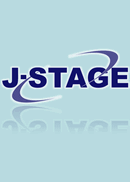All issues

Volume 8 (1988)
- Issue 3 Pages 1-
- Issue 2 Pages 2-
- Issue 1 Pages 1-
Volume 8, Issue 1
Displaying 1-5 of 5 articles from this issue
- |<
- <
- 1
- >
- >|
-
Fumie Kobayashi1988Volume 8Issue 1 Pages 1-8
Published: April 30, 1988
Released on J-STAGE: October 29, 2012
JOURNAL FREE ACCESSDownload PDF (1145K) -
Keiko Kazuma, Reiko Sato, Yoshihiko Ishiguro1988Volume 8Issue 1 Pages 9-16
Published: April 30, 1988
Released on J-STAGE: October 29, 2012
JOURNAL FREE ACCESSThe upper arm anthropometric parameters used in assessing protein-calorie malnutrition were measured and evaluated in elderly persons aged above 65 years. Subjects were two populations; population A, who felt well subjectively: 43 males and 69 females, and population B, who visited a clinic for legal health examination: 69 males and 132 females respectively. In males, for the total study group, measurements of arm circumference (AC), triceps skin fold (TSF), and arm muscle circumference (AMC) were reduced with aging in each population. For selected “healthy” subgroups, fulfilled criteria of weight within 20% of “ideal”, and hemoglobin and other serum values within a specified range, AC and AMC decreased similarly with aging. AMC values of two male “healthy” subgroups were assessed at level of nearly “slight protein malnutrition”, based on Japanese standard in Kon's report. In female both populations, for each total study group, three measurements of the upper arm decreased as subjects advanced in age, but for the “healthy” subgroups, decreases of those parameters were not observed. The difference of change of AMC with aging between males and females was more clearly compared with other published reports. It is pointed out that further inquiry should be necessary to confirm that difference in large subjects.View full abstractDownload PDF (829K) -
Minamisawa Hiromi, Takeo Keiko1988Volume 8Issue 1 Pages 17-23
Published: April 30, 1988
Released on J-STAGE: October 29, 2012
JOURNAL FREE ACCESSThe workload incurreds on bedridden elderly was studied during a complete passive bathing. The 8 subjects were bathed in a special bath system while maintaining the supine positions without active movements, using mechanical help and staff assistance. The heart rate (HR) was measured with a telemetric instrument throughout the whole procedure to estimate the workload. The whole bathing procedure were classified into 4 stages; removing of clothes-transportation, washing, immersion in water and transportation-putting on clothes. The HR chaged with each bathing procedure with maximum HR occuring at the second or third stage in 5 of all the subjects. In the other 3 subjects, there was no apparent increase in HR. The ratio of the HR during the whole procedure to that of the resting time ranged from 1.06 to 1.29, and averaged 1.20 in the 8 subjects. The physiologic costs of whole bathing procedure by this system was estimated to be about 1/3 of that of bathing by oneself. Individual differences observed in HR changes among the subjects were discussed with reference to implications for further study.View full abstractDownload PDF (854K) -
The Analysis of the Term of Residence and the Health Conditions of the InhabitantsMasako Kaneko, Shigeru Tuchiya1988Volume 8Issue 1 Pages 24-35
Published: April 30, 1988
Released on J-STAGE: October 29, 2012
JOURNAL FREE ACCESSIn order to make community health activities effective, basic data on community organizations were collected in two developing areas in a satellite city in the suburbs of Tokyo. We analysed the relationship among neighbors, the rate of participation in some events at each area, the inhabitants' opinions on their community and the length of residence. The following conclusions were obtained from them.
(1) The people who have lived less than 3 years have less experience of particicpating in events than those who have lived there longer; however, the rate of participation was not proportionate to the length of residence.
T(2) The newcomers did not associate closely with the neighbors and familiarity of individuals was proportionate to the length of residence. However it did not lead to familiarity throughout the whole community.
(3) When a problem occurred, the inhabitants wanted to solve it under the guidance of the administrative agencies, but they believed they had to make their community life better through cooperation in oder to be much more autonomus.
(4) The analysis of health needs indicated the importance of education of the inhabitants for prevention of geriatric diseases and proper medical consultation.View full abstractDownload PDF (1441K) -
[in Japanese]1988Volume 8Issue 1 Pages 36-41
Published: April 30, 1988
Released on J-STAGE: October 29, 2012
JOURNAL FREE ACCESSDownload PDF (553K)
- |<
- <
- 1
- >
- >|